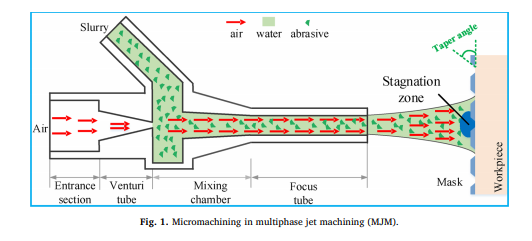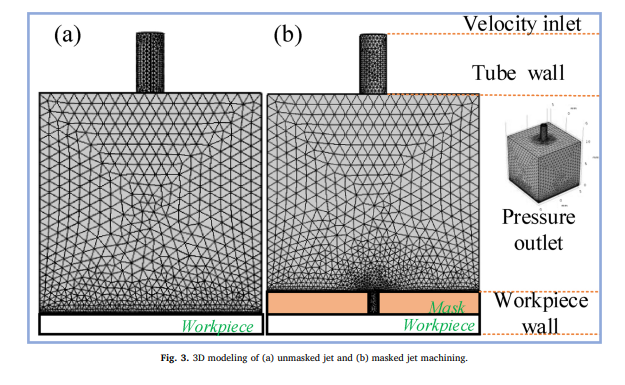| Tapered mask and its effect on the fluid flow and machining efficiency of a multiphase jet |
| Yan Hu,Qingwen Dai,Wei Huang,Xiaolei Wang,Journal of Manufacturing Processes,50,467-474(2020) |
| 发布人:戴庆文 发布时间:2021-04-15 浏览次数:521 |
Multiphase jet machining (MJM) is a novel surface texturing technique that accelerates the mixture of abrasives and water by compressed air for removal of materials. Here, the significant stagnation effect of masked MJM was reported for the first time; this effect can yield a much lower machining efficiency than the masked abrasive air jet machining and unmasked MJM. It was found that using masks with smaller taper angles improves the machining efficiency and the sidewall slope of the channel. Moreover, reducing the jet angle also elevates the efficiency. Machining mechanisms were revealed and described in terms of the slurry pressure and flow velocity in the stagnation zone. Overall, to improve the machining efficiency of masked MJM, two optimized process parameters were suggested and verified: 1) masks with a taper angle of 30° or smaller; 2) nozzles with an inclined jet angle of 80°.
|

